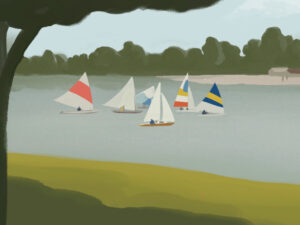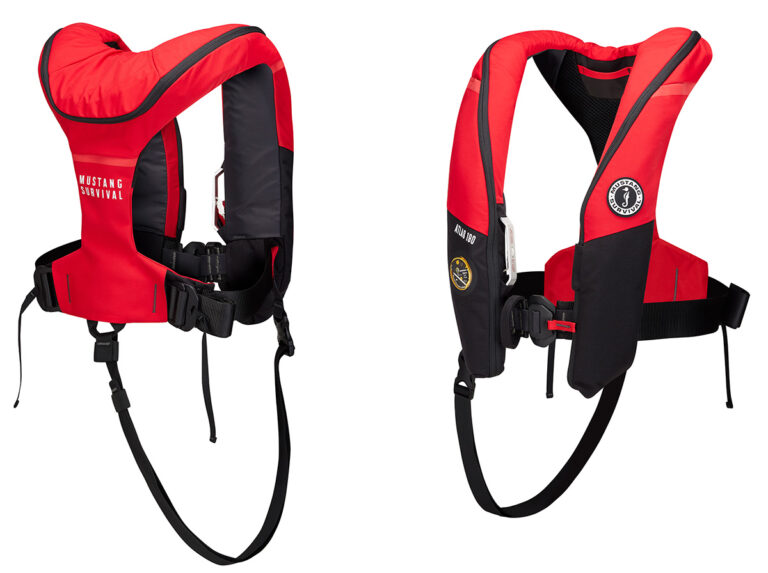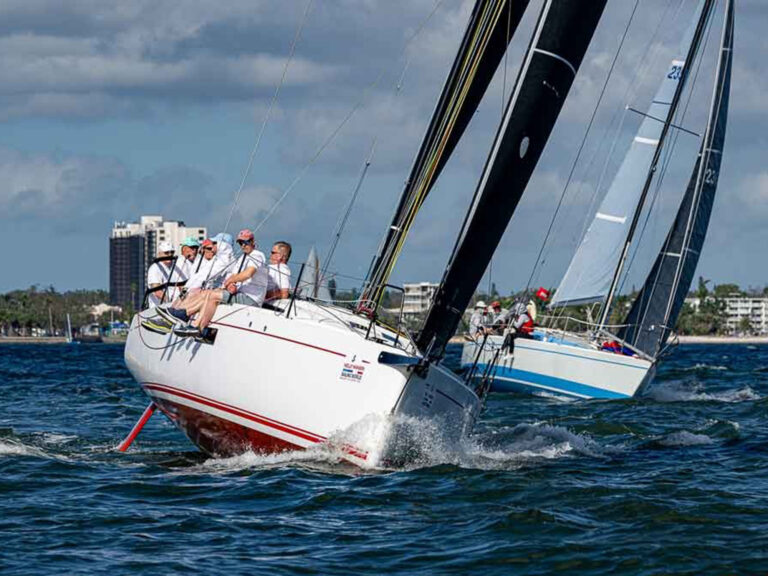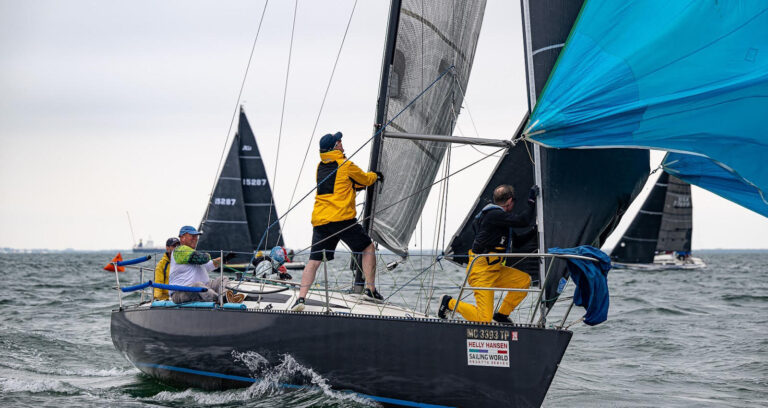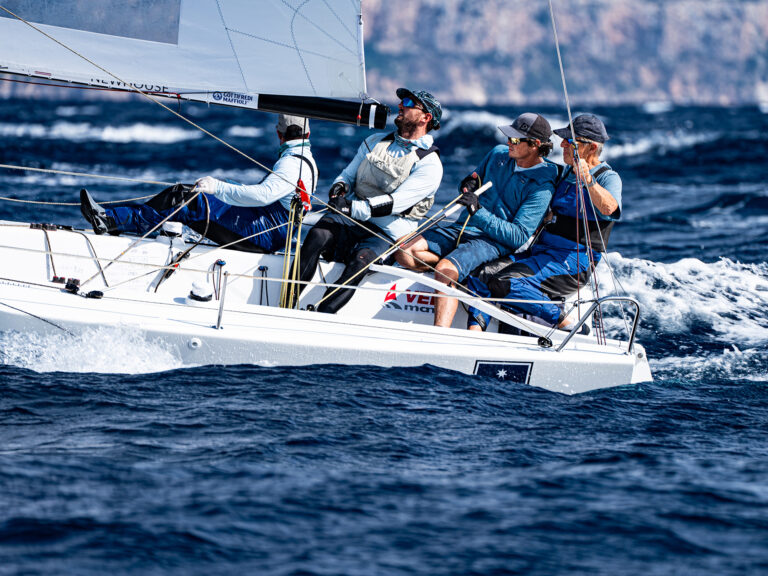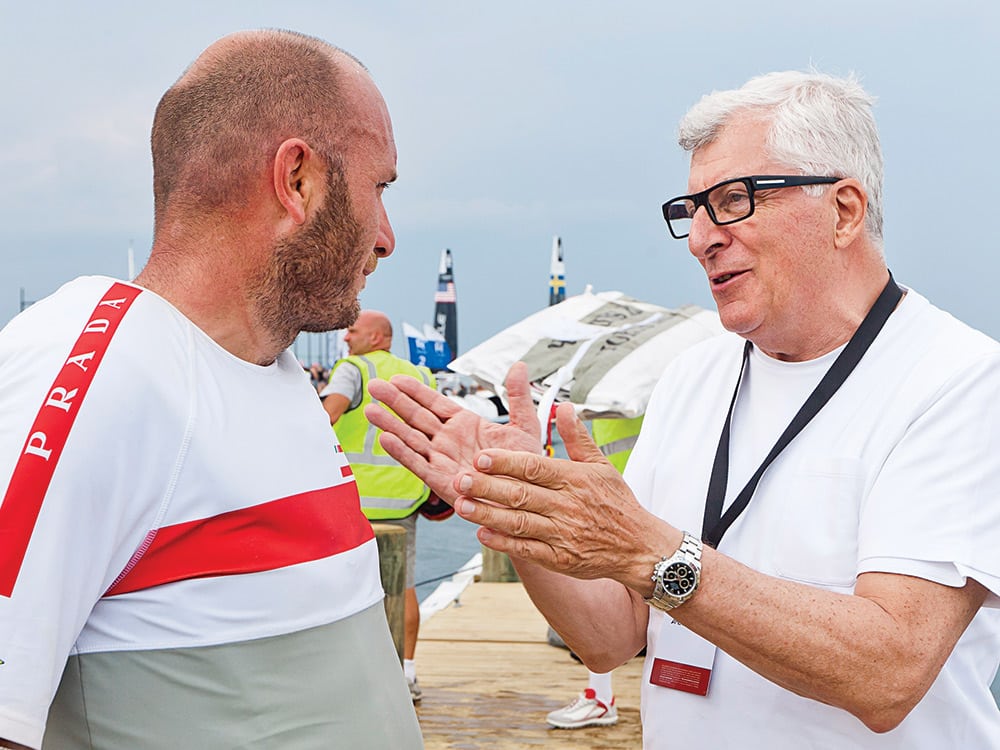
Massimiliano Sirena (Skipper Luna Rossa) and Patrizio Bertelli (Team principal Luna Rossa)
Patrizio Bertelli, the 71-year-old chief executive officer of Prada Group and husband to Miuccia Prada, has been associated with the America’s Cup since the 2000 edition in Auckland. His Doug Peterson and German Frers-designed challenger, Prada, steered by Francesco de Angelis, won the Louis Vuitton Cup but lost in the match to New Zealand 5-0. He returned in 2003 with a new Prada, this one designed by Juan Kouyoumdjian and Ian Howlett and steered by Rod Davis with Gavin Brady.
The team failed to shine, losing in the Louis Vuitton semifinals. He tried again with Luna Rossa, only to lose 5-0 to Emirates Team New Zealand in the final of the Louis Vuitton Cup in Valencia, Spain, with Jimmy Spithill steering. Subsequently, his Luna Rossa syndicates competed in the Louis Vuitton Cup in San Francisco but withdrew from the 2017 edition when the length of the boat was reduced without a unanimous vote, including his own. Today, as Challenger of Record, he has more say in how the next Cup in 2021 plays out.
As America’s Cup Challenger of Record, is everything going the way you want?
Yes, but there are some things we still have to see, and let us never forget that Team New Zealand won the Cup. We have to come to terms with their needs as well. I have been thinking about this quite a lot, about the meaning and the role as Challenger of Record, and eventually I think the main purpose is that of giving the challenger their dignity back. We want to dispel the idea that the America’s Cup is just a closed club with the usual people over and over again.
How do you get new people into this Cup?
It is a hard task right now because we don’t yet have something tangible that people perceive as attractive. Also, the America’s Cup has always been the expression of new technology throughout its history. It’s always been the spearhead of technology in sailing, and it has to be the same way again. It has to be breakthrough technology. It will take some time, and it will take a young generation to be involved. We are looking at the TP52 class today, and all the sailors racing came into the fray after the America’s Cup in 2000. Maybe people like Russell Coutts and Dean Barker are the oldest in their game right now. In the TP52s there are not really many young sailors.
The Cup isn’t being held in TP52s, however.
That is true. At the same time, we need a new generation of sailors to come up. It started with the catamarans. They were, so to speak, more engineers than pure sailors. If you want to look at real younger generations you see them more on the foils. There are quite a few classes that appear to be very appealing to younger sailors right now, and we need to find a way to combine that with the America’s Cup. The America’s Cup must not be reserved for established older, more mature people only. It should be appealing to a younger generation as well.
And this is why we see the 75-foot monohull on foils?
Yes. We don’t want to lose the physical side of maneuvering. At the same time, we don’t want to give up on breakthrough technology. It is the best. We know that it is going to be appreciated by some and it is going to be criticized by others, but we feel that is the way to go. Team New Zealand and Grant Dalton and all of us, we agreed we feel we should not make people feel that the America’s Cup belongs to any one given person. It must become open again. So, let the fresh energy come in, let new talent come in and replace it again. That is our commitment. That is what we want to do. Every single time a yachtsman asks why we are we doing this, you know there is passion. Personally, I do not see much difference between foil sailing or other sailing. I feel that everybody engaged in any kind of sailing wants to see the America’s Cup not as much of an elite club but the utmost expression of their talent and their skills. It should be a point of arrival, not a dream for designers or engineers. If we succeed in doing this, there will be a whole lot of people coming back into play.
There is worry that there is no stirring in Australia. You would have thought the next-door neighbor would be knocking on the door.
We will see. It is far too early to tell now. [Ernesto] Bertarelli called us. He is showing some interest. He is not sure about the design or whatever. It is 2021, not tomorrow. There is still a lot of time to go.
Presumably, your main agenda is to win the America’s Cup, and I hear you have made moves to recruit Jimmy Spithill.
Spithill called us about six weeks ago [Fisher’s interview was conducted in March. —Ed.] and said he’d just finished. James started with us before he went to Oracle. We are always on very good terms, but even though we are on very good personal terms we didn’t want to urge him into making a decision. There were two major things we needed to agree on, which were his mentality, so to speak, his feelings about this, and also his compensation because, of course, when he was at Oracle he made impressive amounts of money. He was very open and very frank with us and half-jokingly said, “I would come for free.”
When he joined Oracle, he committed to a specific identity image in terms of communications, and in terms of connections and sponsors. If he decided to leave Oracle, he would be much freer in expressing his identity. It feels a bit like he would like to go back 10 years. If he does get back as one of the team he will be very easygoing. We have one objective, which is winning the Cup.
It is going to be very difficult for him to go back to that.
If you have a shared relationship with people, of course you are rivals, but you are rivals on the sporting side. It is not a personal rivalry, which is something a bit sorry as far as Russell [Coutts] is concerned. His attitude is always a bit mercenary. Maybe because he is money minded and that has a huge impact on his behavior. Then, of course, as soon as he gets on a boat it is the same old Russell. Dr. Jekyll and Mr. Hyde.
Any other major signings you are thinking of?
No. There are so many things we have created in progress for the younger people too. We’re in the process of building a new TP52. The TP52 is really important, not just because we want people to train in racing, but we want them to stick together. It’s the only brilliant professional circuit out there. Everybody is there, and it is already very strong and it is highly technical. It is the best gym for training in contemporary sailing, for racing. There is no such thing as a cheap America’s Cup. An America’s Cup is anywhere between 60 million and 80 million euros, but it does not make sense to think of a cheap America’s Cup. It is never going to be the sailor’s America’s Cup. The sailing team’s America’s Cup.


